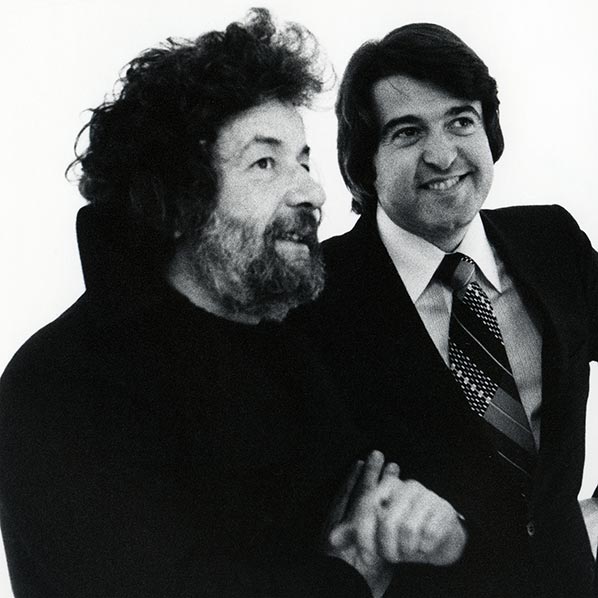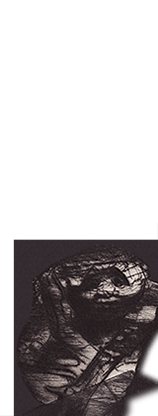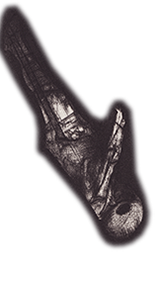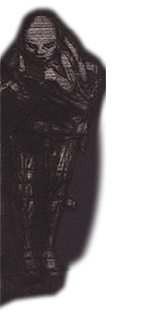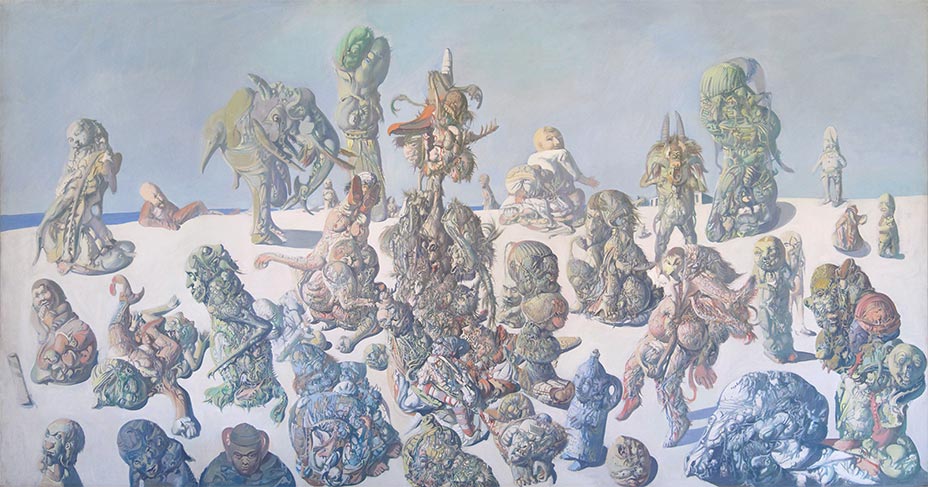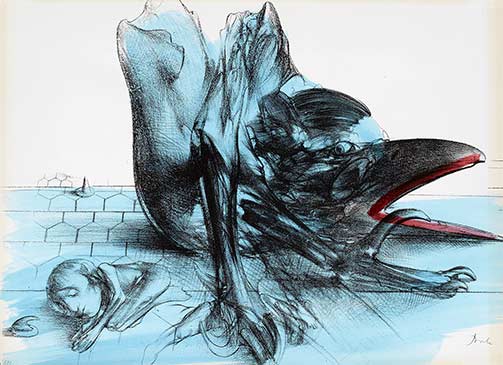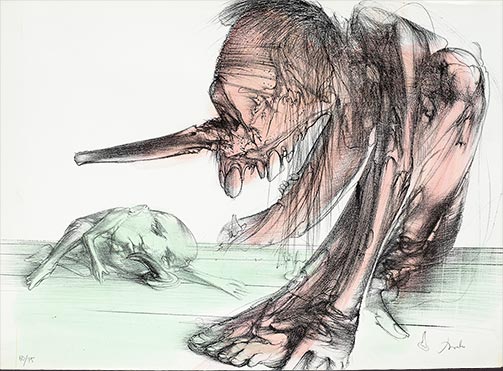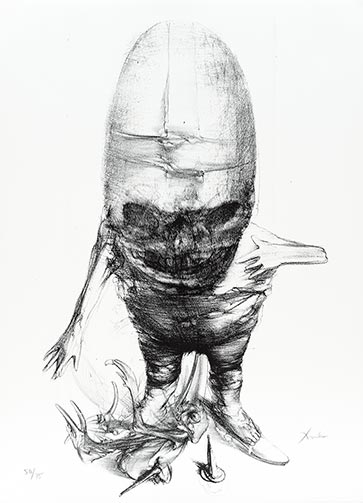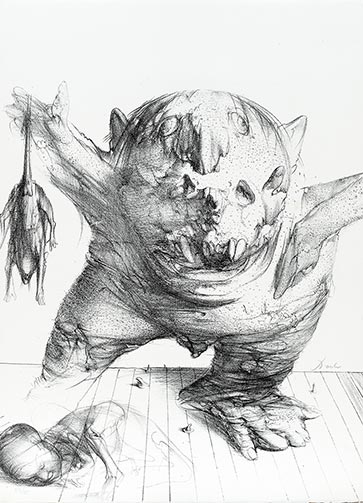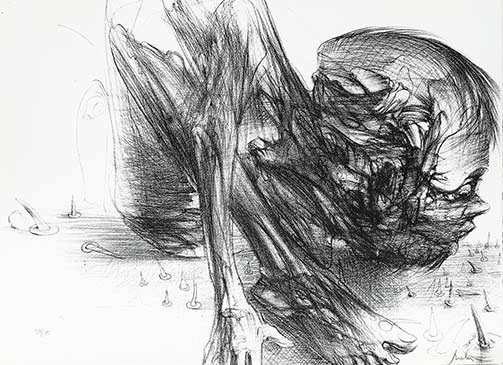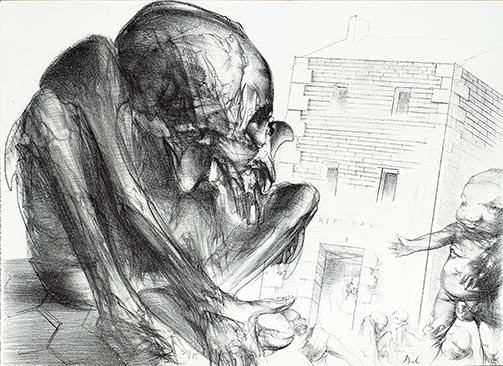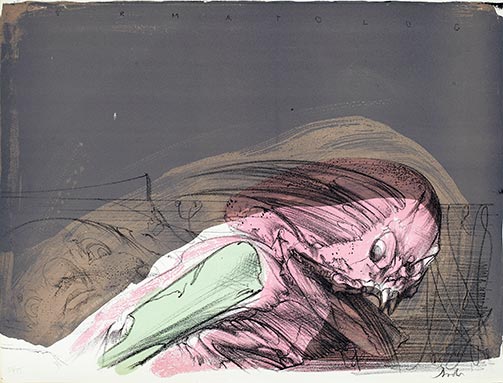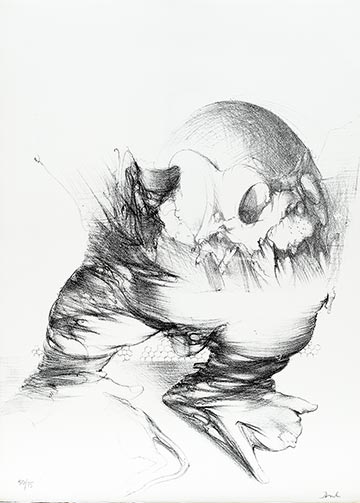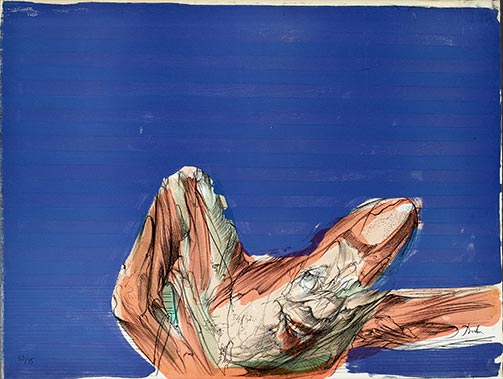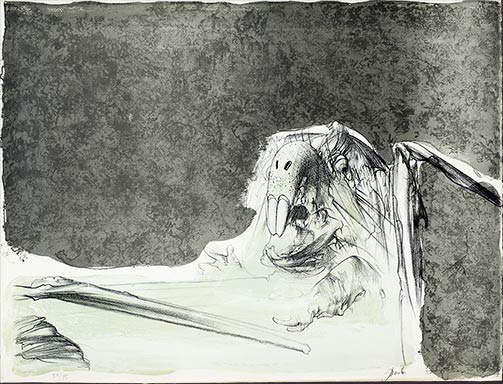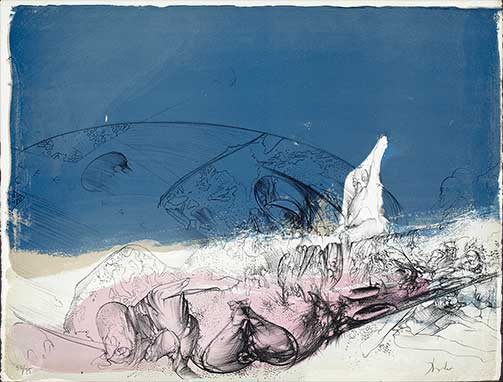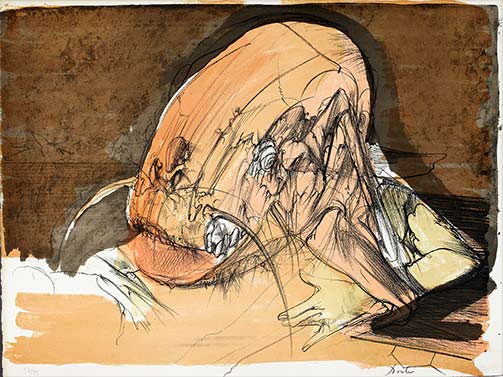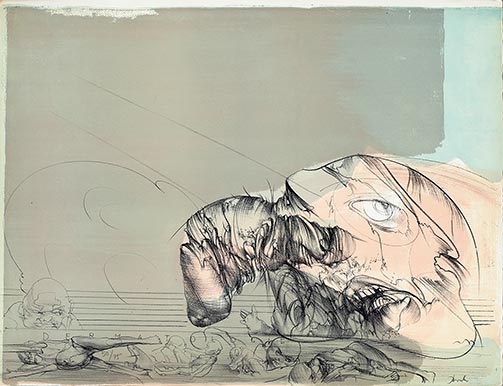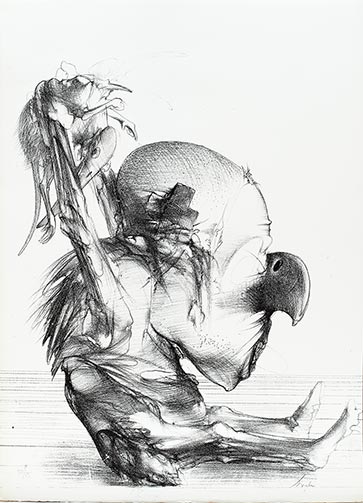Dado – Biographical timeline
The 1970s
Click on the images to enlarge them
(large and extra large sizes)
❧
Fullscreen
slideshow
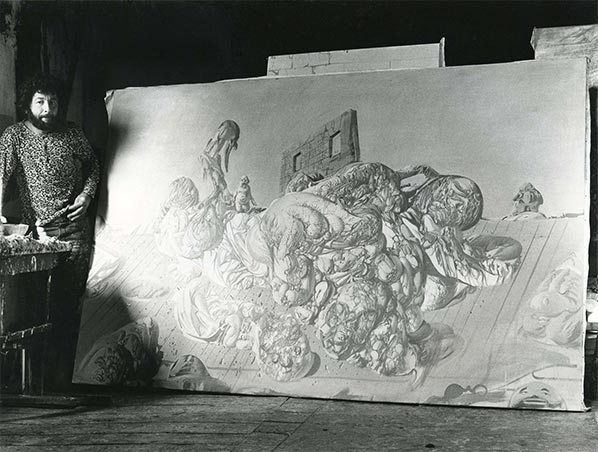
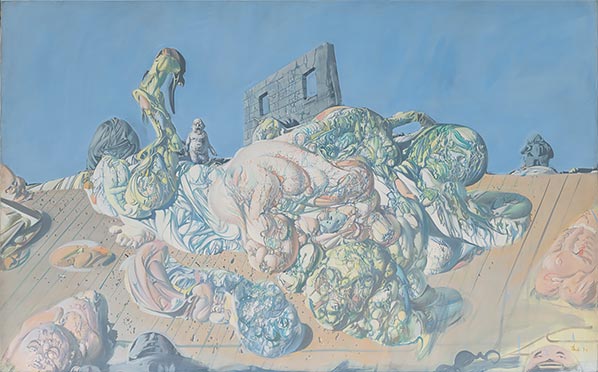
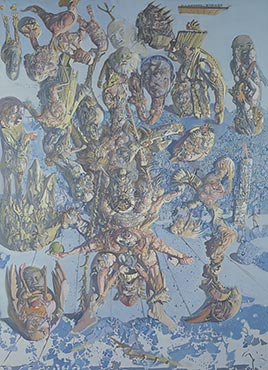
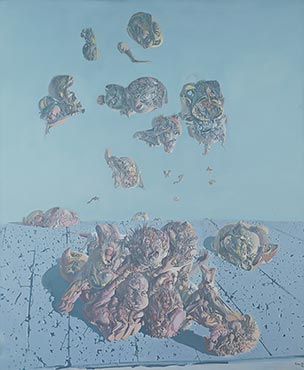
Right: Green Europe, 1969-1970, oil on canvas, 244 × 200 cm. Courtesy Stedelijk Museum Amsterdam.
1970Retrospective at the Centre National d’Art Contemporain in Paris, where Dado shows his car, a “Traction Avant”, covered in painted bones. The Stedelijk Museum in Amsterdam purchases three paintings: The Great Plant Police (1969), Green Europe (1969-1970) and The Male Nurse (1969). Purchase by the Fonds National d’Art Contemporain of Great Blue Beach.
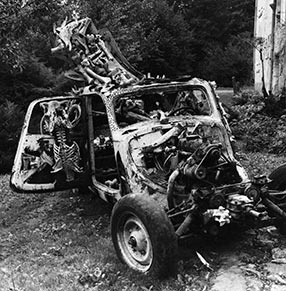
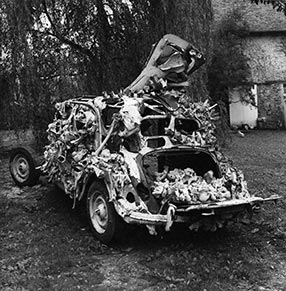
Skeletonization of the car. Photos: Domingo Djuric.
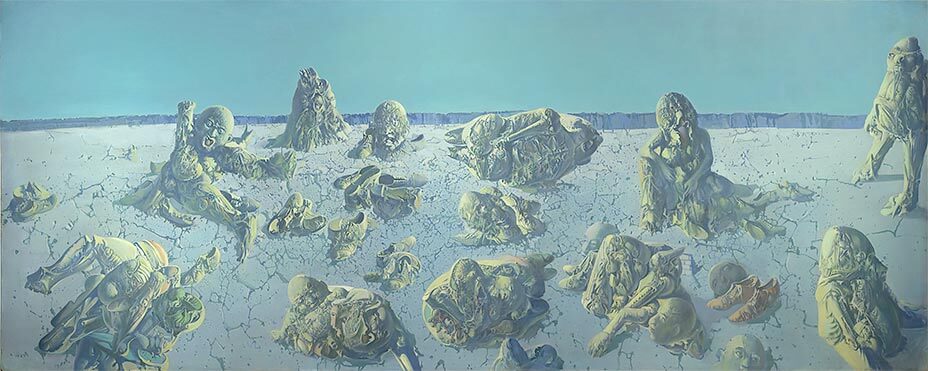
Photo: © Les Méchantes Petites Filles.
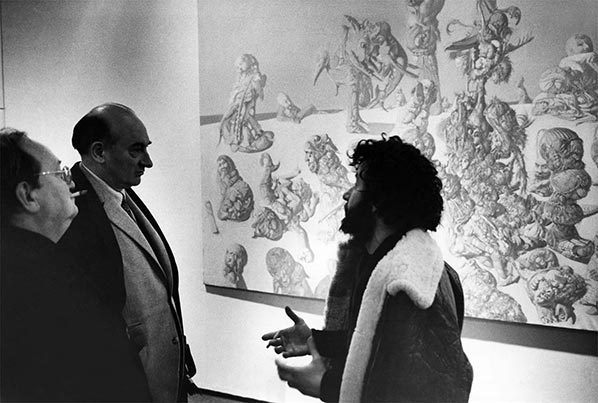
1971The Swimming Pool enters the collection of the Boijmans van Beuningen Museum, Rotterdam. Stays in Corsica on the holiday camp of Dr. Hoffman with the collectors M. and Mme Boulois. They introduce him to Jean-François Jaeger. Begins a collaboration with the Jeanne-Bucher Gallery that is to last five years. Exhibition at the Thérèse Roussel Gallery in Perpignan of the 25 engravings made in 1967 with assistance from Alain Controu. This is the first event showing this new aspect of Dado’s work.
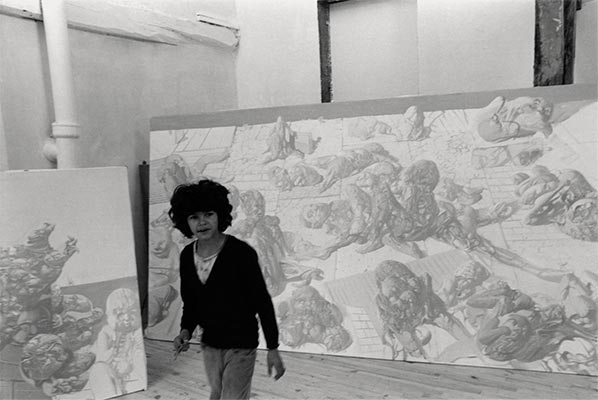
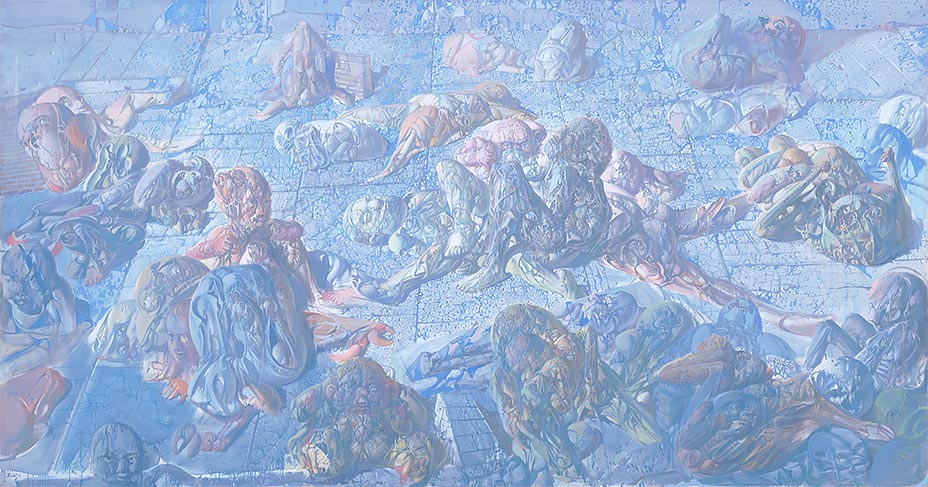
Collection Museum Boijmans Van Beuningen, Rotterdam. Photo: John Tromp.
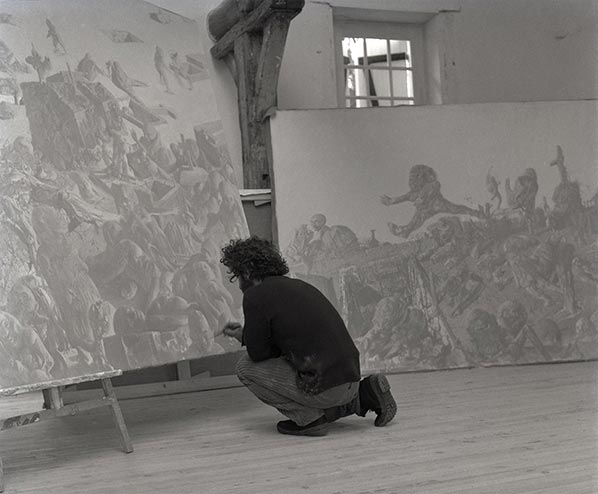
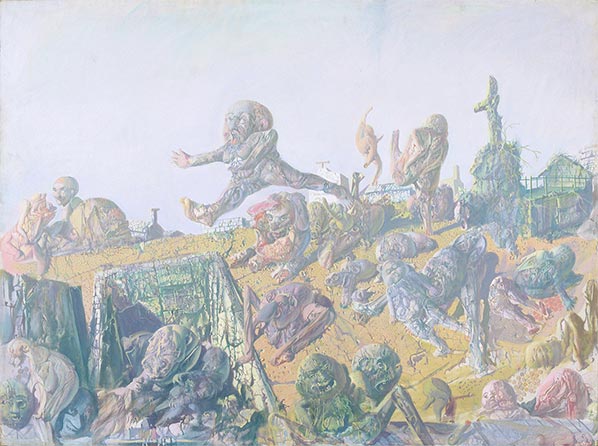
1972Dado devotes his time increasingly to engraving, encouraged by J.-F. Jaeger and still with advice from Alain Controu. Thirty-five plates are engraved, to be published by the Jeanne-Bucher Gallery. Proofs are deposited by the artist in the Print Department at the French National Library. Acquisition of two White Foodstuffs, by Robert Malaval, a friend. Birth of Amarante.
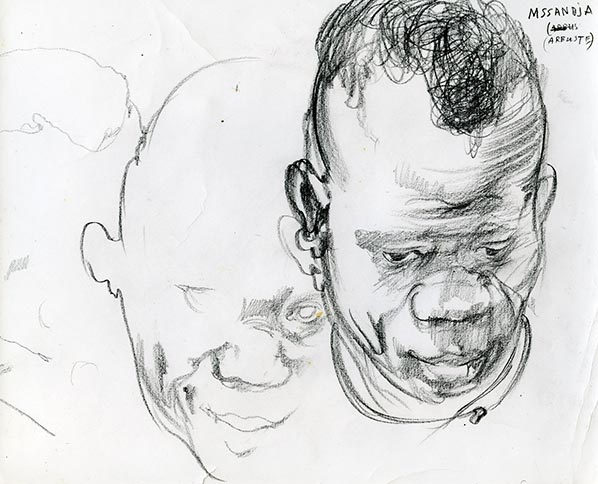
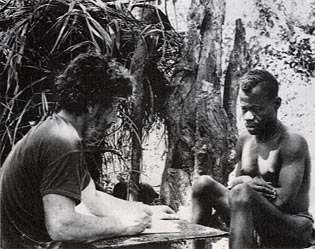
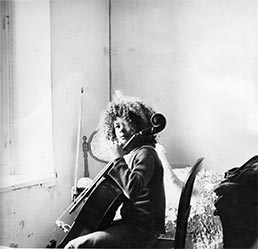
Right: Amarante before a White Foodstuff by Malaval, November 11, 1981. Photo: Domingo Djuric.
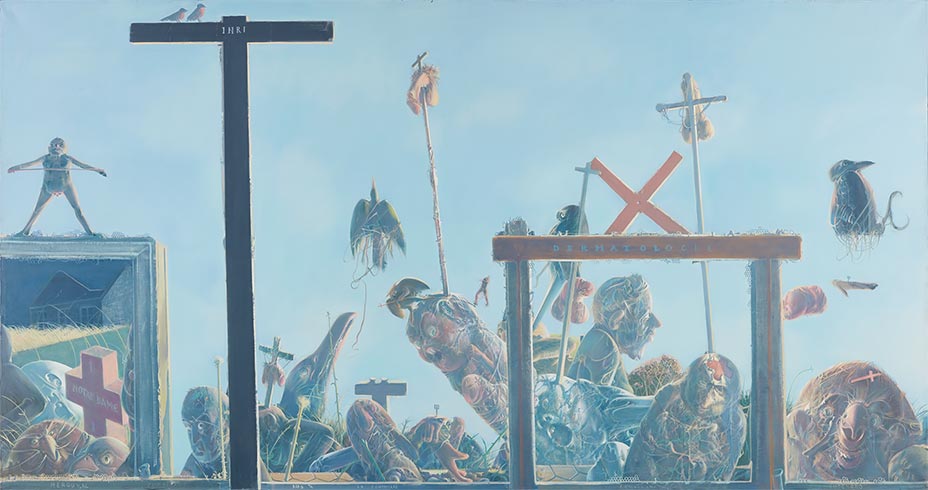
Gift of Mr. Joachim Jean Aberbach, New York. Photo: Charles Mayer Photography.
1974Second retrospective – devoted exclusively to paintings – at the Boijmans van Beuningen Museum in Rotterdam. The Way of the Cross (1973) enters the collection of the Rose Art Museum of Brandeis University, near Boston. Dado follows a medical mission with J.-F. Jaeger’s brother, Dr. Georges Jaeger, to the Central African Republic, among the Pygmies. Starts a collaboration with the brothers Jean and Julian Aberbach, whose gallery is in New York.
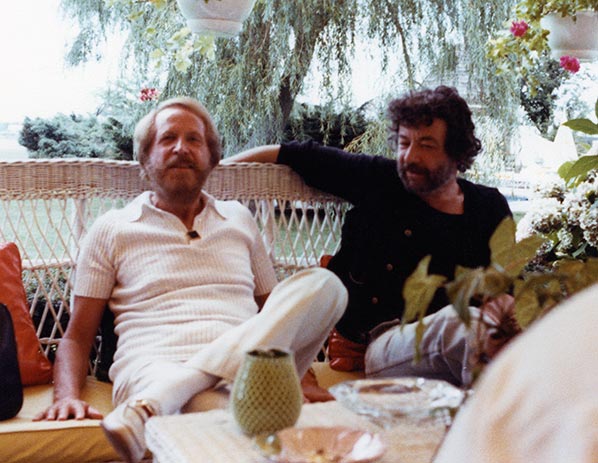
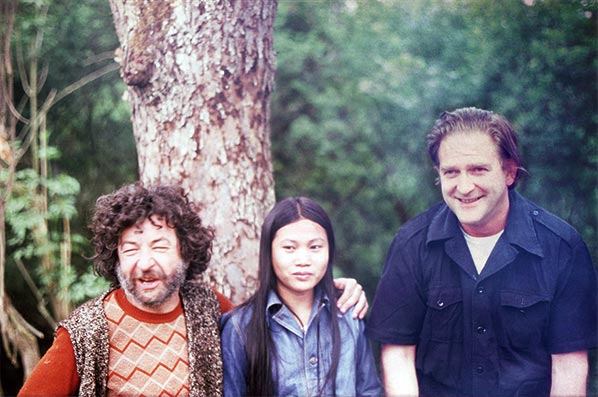
1975Dado realizes fourteen lithographs printed by Pierre Badey and published by Piet Moget (Dermatologie portfolio).
Advance the slideshow manually with the left and right arrow keys on your keyboard. ❧ Hover over the images for captions. ❧ Click on the images to enlarge them (large and extra large sizes).
1976Dado donates to the Pompidou Center Hérouval Diptych (1975-1976).
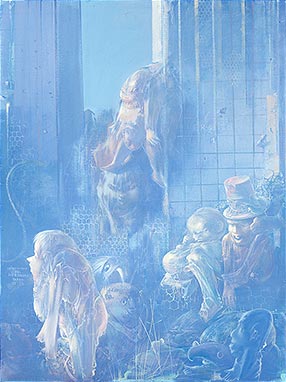
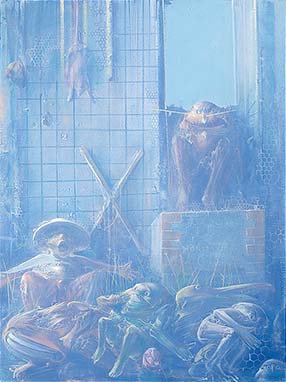
© Collection Centre Pompidou, Dist. Rmn. Photographs: Christian Bahier and Philippe Migeat.
1977Montjavoult Diptych (1976-1977) enters the collection of the Solomon R. Guggenheim Museum in New York. He has a growing interest for bibliophilic printing, making fifteen engravings for the Book of Job, on which he will rework later, using gouache.
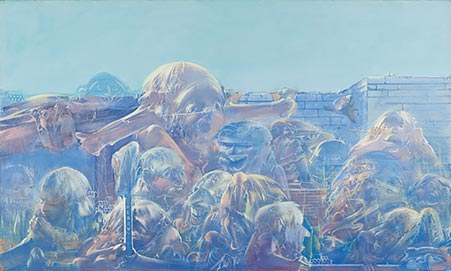
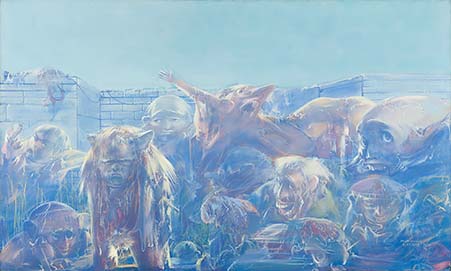
Solomon R. Guggenheim Museum, New York.
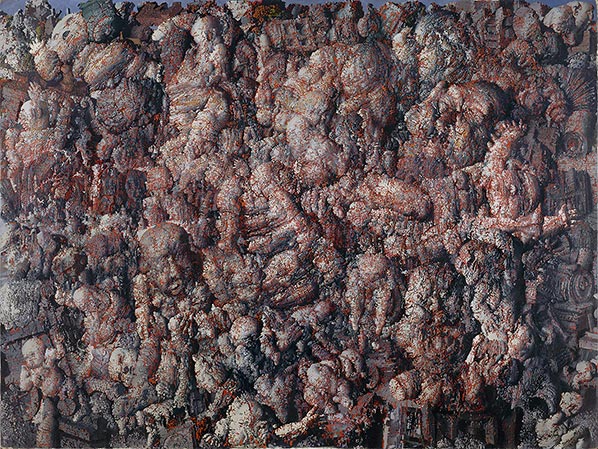
© Collection Centre Pompidou, Dist. Rmn. Photo: Georges Meguerditchian.
1978The Scaler Foundation gives an old work by the artist, Limbo or The Massacre of the Innocents (1958-1959), to the Pompidou Center. Until the 1980s, Dado will tend to concentrate on graphic art: drawing, engraving, collage.
